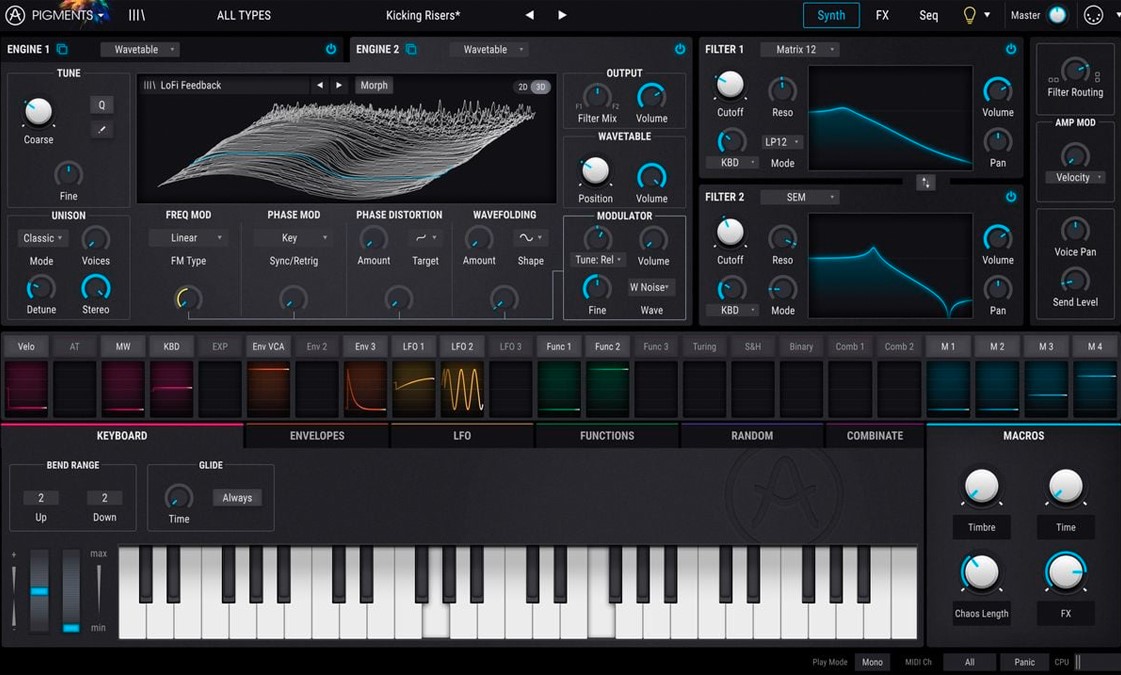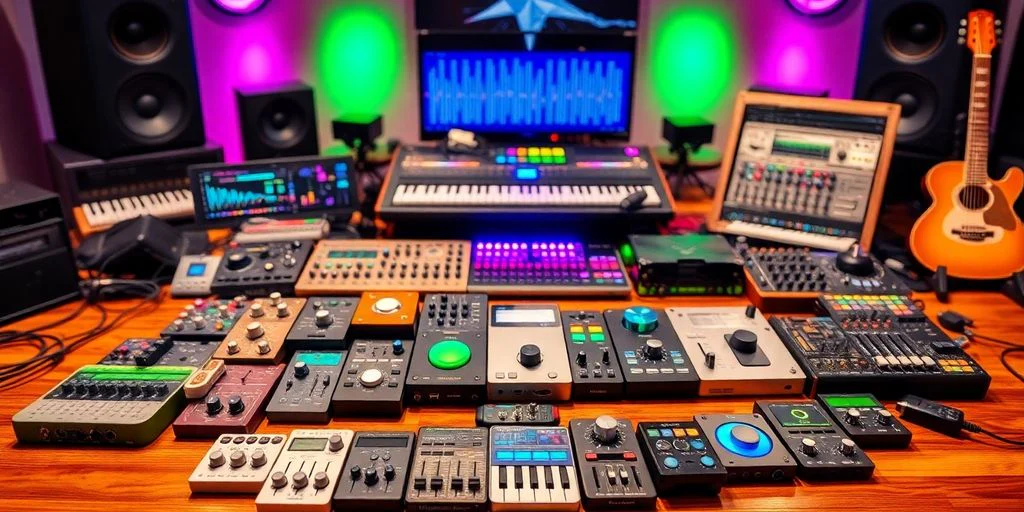In today’s digital music landscape, the synth plugin you choose can define your sound, inspire your workflow, and even shape your creative identity. With thousands of options available—ranging from classic analog emulations to cutting-edge wavetable powerhouses—finding the right synth for your genre and workflow can feel overwhelming. This guide will help you navigate the world of synth plugins, whether you’re producing EDM, hip-hop, rock, pop, orchestral, or experimental music.
1. Understanding Synth Plugins: The Basics
Before diving into recommendations, let’s clarify what synth plugins are and why they matter.
- Synth Plugins are software instruments that generate sound using various synthesis methods (subtractive, FM, wavetable, etc.).
- They come in different plugin formats (VST, AU, AAX) and can be used in any compatible DAW (Digital Audio Workstation).
- Synth plugins offer a wide palette of sounds, from lush pads and searing leads to punchy basses and evolving textures.
Why Your Choice Matters:
- The right synth can speed up your workflow, inspire creativity, and help you achieve a polished, genre-appropriate sound.
2. Types of Synthesis and Their Musical Applications
Understanding synthesis types helps you match plugins to your style:
|
|---|
3. Matching Synth Plugins to Your Genre
Electronic Music (EDM, Synthwave, Trap, Future Bass) :
- Key Features: Versatility, bold sound design, modern presets.
- Recommended Plugins: Serum, Massive, Sylenth1, Vital.
- Why: These synths are renowned for their aggressive leads, deep basses, and flexible modulation options—perfect for electronic genres.
Orchestral & Film Score :
- Key Features: Realism, expressive dynamics, orchestral libraries.
- Recommended Plugins: Omnisphere (for hybrid scoring), Kontakt (with orchestral libraries), Spitfire Audio, EastWest Hollywood Orchestra.
- Why: These plugins offer authentic strings, brass, and cinematic textures essential for scoring.
Rock & Pop :
- Key Features: Analog emulation, bread-and-butter sounds, realistic instruments.
- Recommended Plugins: Diva, Analog Lab V, Trilian (for bass), Ample Guitar.
- Why: Emulations of classic synths and realistic instrument libraries suit the band-oriented sound of rock and pop.
Hip-Hop & R&B :
- Key Features: Punchy drums, lush keys, thick bass.
- Recommended Plugins: Keyscape (for keys), Maschine, MPC Beats, Kontakt, Serum.
- Why: These plugins provide the deep bass, smooth keys, and hard-hitting drums that define hip-hop and R&B production.
Experimental & Sound Design :
- Key Features: Modularity, deep modulation, unique timbres.
- Recommended Plugins: Phase Plant, Pigments 4, Reaktor, Softube Modular.
- Why: These synths offer advanced sound design capabilities and modular routing for experimental sounds.
4. Key Factors to Consider When Choosing a Synth Plugin
A. Price and Value :
- Free synths like Vital and Synth1 are great for beginners.
- Premium synths (Serum, Diva, Omnisphere) offer advanced features and high-quality sound but come at a higher cost.
B. Workflow and Usability :
- Look for a user-friendly interface and intuitive preset browser.
- Some synths are “preset machines” (Analog Lab V), while others are deep sound design tools (Phase Plant, Pigments 4).
C. Sound Quality and Character :
- Demo the synth to see if its core sound fits your style.
- Analog emulations suit vintage and organic genres; digital synths excel in modern, electronic styles.
D. CPU Usage :
- Some synths (Diva, Omnisphere) are CPU-intensive; consider your computer’s specs.
E. Preset Library :
- If you’re not a sound designer, choose synths with large, genre-specific preset libraries.
F. Community and Support :
- Popular synths have active user communities, tutorials, and third-party preset packs.
5. Synth Plugin Recommendations by Category
| Category | Top Choices | Why Choose Them? |
|---|---|---|
| Best All-Rounder | Serum, Pigments 4, Phase Plant | Versatile, modern, deep modulation |
| Best Analog Emulation | Diva, Analog Lab V, Mini V | Warm, classic sounds |
| Best for Bass | SubLab XL, Trilian, Serum | Focused on deep, punchy bass |
| Best Budget/Free | Vital, Synth1, Tyrell N6 | High quality, zero cost |
| Best for Presets | Analog Lab V, Omnisphere, Massive | Huge preset libraries |
| Best Modular | Softube Modular, Reaktor, Phase Plant | Modular patching, experimental sound |
6. How to Test and Compare Synth Plugins
A. Demo Versions :
- Most paid synths offer demos—test them with your own MIDI clips and compare sounds.
B. Preset Browsing :
- Quickly browse presets to see if the synth covers your genre’s staples.
C. Sound Layering :
- Try layering synths for fuller sounds, but watch out for phase issues.
D. Workflow Fit :
- Does the plugin inspire you? Is it easy to tweak and automate?
E. CPU and Stability :
- Run the plugin in a busy project to check for glitches or high CPU usage.
7. Workflow Tips: Making the Most of Your Synth Plugins
- Tag and Favorite Sounds: Build your own “sample pack” of favorite presets for quick access.
- Layering: Combine synths for richer textures, but keep an eye on frequency clashes and phase issues.
- Reference Tracks: Compare your synth sounds to professional tracks in your genre to ensure your mix is balanced4.
- Sound Design: Learn the basics of synthesis to tweak presets and create your own signature sounds.
- Use EQ and Effects: Shape your synths with EQ, compression, and effects for a polished result.
8. Free vs. Paid Synth Plugins: What’s Right for You?
Free Synths:
- Great for beginners or producers on a budget.
- Examples: Vital, Synth1, Tyrell N6.
Paid Synths:
- Offer advanced features, better sound quality, and premium support.
- Worth investing in if you’re serious about music production.
9. Genre-Specific Plugin Shortlist
| Genre | Must-Have Plugins | Why They Work |
|---|---|---|
| EDM | Serum, Massive, Sylenth1, Vital | Modern, aggressive, flexible |
| Synthwave | Diva, Analog Lab V, TAL-U-No-LX | Vintage, analog, lush pads |
| Hip-Hop | Keyscape, Maschine, Serum, Kontakt | Deep bass, rich keys, punchy drums |
| Pop | Serum, Diva, Omnisphere, Trilian | Versatile, polished, radio-ready |
| Orchestral | Kontakt, Omnisphere, Spitfire Audio | Realistic, expressive, cinematic |
| Experimental | Phase Plant, Pigments 4, Reaktor | Modular, innovative, unique timbres |
10. YouTube Tutorials and Further Learning
Frequently Asked Questions
Q: How many synth plugins do I need?
A: Start with one versatile synth that suits your genre. Add more as your sound and needs evolve.
Q: Should I buy presets or make my own?
A: Use presets for inspiration and speed. Learn sound design to create unique patches as you grow.
Q: Are free synths good enough for professional music?
A: Many free synths (like Vital) are used by professionals. Paid plugins offer more features and better sound, but free options are excellent for starting out.
Conclusion: Your Synth, Your Sound
Choosing the right synth plugin is a journey—one that evolves with your skills, tastes, and musical direction. Start with a versatile, genre-appropriate synth, experiment with presets, and gradually dive into sound design. Remember, the best synth is the one that inspires you and helps you realize your musical vision.
Quick Reference: Synth Plugin Comparison Table
| Plugin | Synthesis Type | Best For | Price Range | Preset Library | CPU Usage | User Level |
|---|---|---|---|---|---|---|
| Serum | Wavetable | EDM, Pop, Hip-Hop | $$$ | Large | Medium | All |
| Diva | Analog | Pop, Synthwave | $$$ | Medium | High | Intermediate |
| Vital | Wavetable | EDM, Trap, Pop | Free/$$ | Medium | Low | All |
| Pigments 4 | Hybrid | Experimental | $$$ | Large | Medium | All |
| Analog Lab V | Analog/Sample | Pop, Synthwave | $$ | Huge | Low | Beginner |
| SubLab XL | Subtractive | Bass, Hip-Hop | $$ | Medium | Low | All |
| Omnisphere | Hybrid/Sample | Film, Pop, EDM | $$$$ | Huge | High | All |
Final Tips for Aspiring Producers
- Start simple: Master one synth before collecting more.
- Use reference tracks to guide your sound choices.
- Explore free plugins to expand your palette without breaking the bank.
- Join online communities for tips, presets, and feedback.
“Selecting the right synth sounds can be a daunting task. But with a clear understanding of your genre, workflow, and sonic goals, you can build a toolkit that inspires and elevates your music.”
Ready to find your signature sound? Demo some synths, explore presets, and let your creativity lead the way!.



